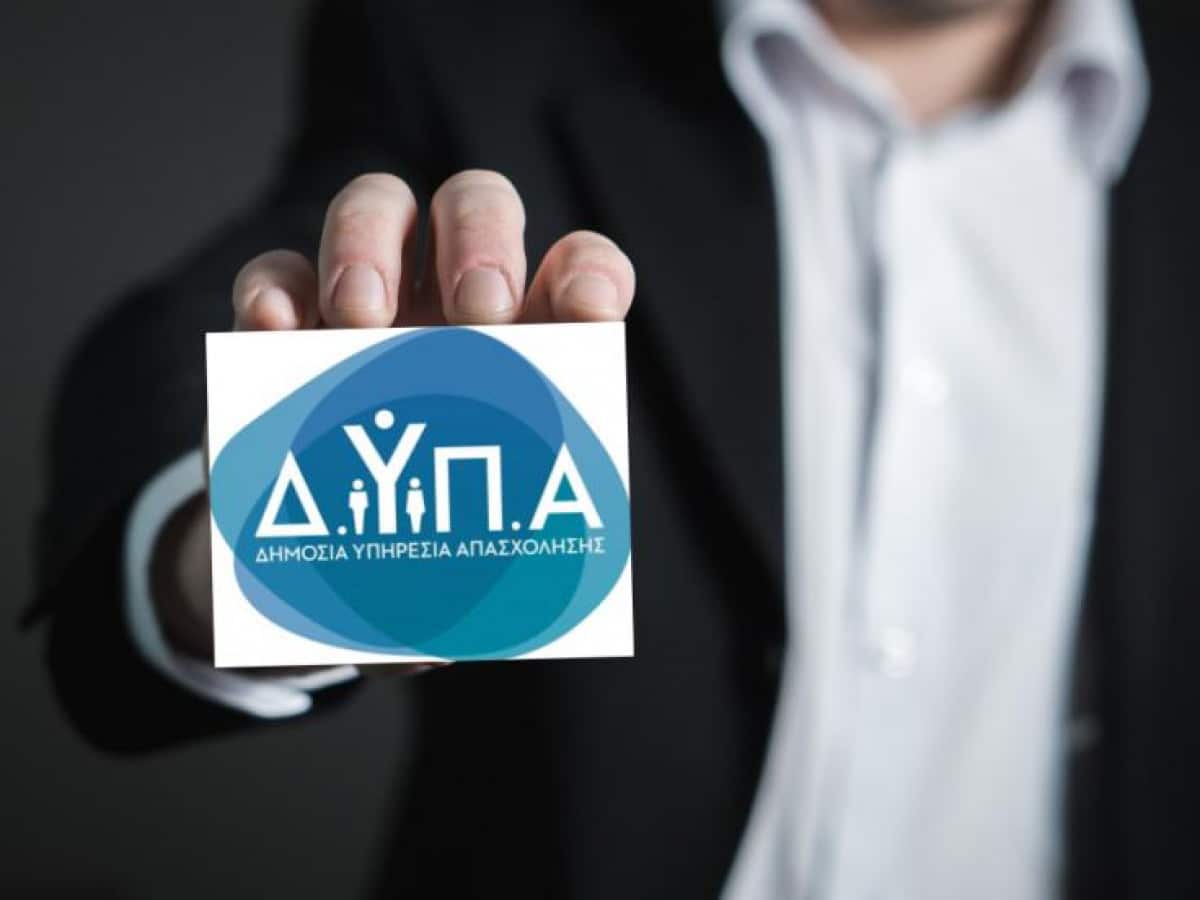
Το Πρόγραμμα Ανάπτυξη Ψηφιακών Προϊόντων Και Υπηρεσιών ενισχύει επενδυτικά σχέδια για την ανάπτυξη νέων προϊόντων και υπηρεσιών που εμπίπτουν στον κλάδο πληροφορικής και επικοινωνιών, αποσκοπώντας:
- enhancing healthy entrepreneurship through the use of ICT
- strengthening the ICT industry (in terms of competitiveness and extroversion)
- the creation of new digital products and value-added services with a strong commercial perspective and sustainability
To this end, the "Digital Products and Services Development" Programme will provide grants, in the form of grants, for the implementation of investment projects that cover the whole cycle of development of digital products and services (new product development) and include:
- Preparatory activities (indicatively: market research, feasibility study, actions to acquire new knowledge and skills for the development of new products)
- Development activities of new digital products / services
- Complementary activities for the commercialization of new products and services
Who it concerns
Within the framework of the Program, existing private enterprises that carry out economic activity are supported, and for which the following cumulative conditions are met:
i. They have their registered office or branch in the Greek Territory with a Greek VAT number.
ii. They are active on the date of submission of the application for Funding by the Program.
iii. They have been established before the date of submission of the Application for Funding to the Program.
iv. They constitute a legal entity (Société Anonyme, Limited Liability Company, General Partnership or Limited Partnership, P.C., Sole Proprietorship, Social Cooperative Enterprise, Cooperative) or Sole Proprietorship and keep haplographic or double-entry books.
v. They carry out an economic activity in all sectors of the economy, offering products and services in a given market and are subject to the rules of commercial law.
Eligible economic activities for the purposes of the Programme are exclusively the activities of the IT sector, as detailed in Annex I of this Call. The Nace codes listed in Annex I must be active before the start of the implementation of the investment project. Proposals may be submitted by undertakings carrying out any economic activity carried out on the free market.
Proposals cannot be submitted by entities (natural or legal persons) carrying out activities of a non-commercial nature, such as public administration and compulsory social security activities, gambling activities, organisations, household activities, as well as activities of offshore organisations, which fall under the following SMRs, as well as all their subdivisions.
Code Description
84 Public administration and defence; Compulsory social security
92 Gambling and betting
94 Activities of organisations
97 Activities of households as employers of domestic staff
98 Activities of private households
99 Activities of offshore organisations and bodies
00 Lack of activity
Also, the Programme does not support activities that are contrary to the application of the "do no significant harm" principle (2021/C 58/01), as described in more detail in Annex I.
vi. They operate legally and comply with the relevant EU and national environmental legislation, having, upon request, the appropriate documentation, in accordance with the applicable legislation and their activity (e.g. operating license, operating license exemption, notification of commencement of operation, any environmental permit provided for, etc.).
vii. They are micro, small or medium-sized enterprises, according to the definition in Annex I of Regulation (EU) 651/2014, as in force (see Annex II of this Call).
viii. They are not bankrupt, wound up or administered by the courts.
ix. No State aid recovery proceedings are pending against them.
x. They have not received rescue or restructuring aid or have received rescue aid and have repaid the loan or terminated the guarantee agreement or have received restructuring aid and are not yet subject to a restructuring plan.
xi. They are not companies in difficulty, according to the definition of article 2 of Regulation (EU) 651/2014 and the EYKE document 42649/EYKE5351/10.04.2017 "Clarifications on issues of application of Regulation 651/2014, regarding the classification of an enterprise as in difficulty". In addition, taking into account Article 1 para. 4(c) of Regulation (EU) 651/2014, the Programme may, by way of derogation, also be addressed to undertakings that were not in difficulty on 31 December 2019, but which became in difficulty during the period from 1 January 2020 to 31 December 2021.
xii. There are no grounds for exclusion under Article 40 of the Law. 4488/2017 (137/A) under which: potential beneficiaries are excluded from joining a programme or from being subject to aid schemes, financed by Union or national funds, if they have been imposed on them, within 2 years before the deadline for submitting an Application for Funding:
a) three (3) fines imposed by the competent control bodies of the Labor Inspection Body for violations of labor legislation that are characterized, in accordance with ministerial decision 2063/D1632/2011 (B ́ 266), as in force from time to time, as "high" or "very high" severity, which result cumulatively from three (3) audits carried out, or
b) two (2) fines imposed by the competent control bodies of the Labor Inspection Body for violations of labor legislation related to undeclared work, which result cumulatively from two (2) audits carried out. The sanctions referred to in subparagraphs (a) and (b) must have acquired final and binding force.
xiii. They shall submit a proposal for the development of new digital products and services that they will commercially exploit, committing to:
a. that no part of the investment project has started to be implemented before the submission of the Funding Application,
b. that they will activate – if it does not already exist at the time of the proposal phase – an eligible investment SMR, according to the analysis in Annex I, before the start date of implementation of the investment project.
Each business (distinct VAT number) may submit only one (1) funding proposal under this Program.
Program budget
The budget of the Program (total Public Expenditure) amounts to 100.000.000,00 euros.
The Program is funded by resources of the Recovery and Resilience Fund for the Action of the Fund – 16706 entitled: "Digital Transformation of Small and Medium-sized Enterprises", within the framework of the National Recovery and Resilience Plan Greece 2.0 with the funding of the European Union – NextGenerationEU. It has joined the NRRP with reference number YPOIK 17646/10-02-2022 decision for the inclusion of the project (ADA: OTPXI-P19), entitled "Industrial Data Platforms" and MIS code TA 5161112.
The projects that will be proposed for support under the Program can have a budget from €200.000,00 to €2.000.000,00.
Amount of subsidy
Type and Intensity of aid
The support awarded under the Programme shall take the form of a grant. The aid shall cover part of the costs eligible for aid.
The amount of aid shall be modulated on the basis of:
- The size of the business
- The type of activities and eligible costs
- The "GAK" aid thresholds
and is broken down as follows:
- The eligible costs of Industrial Research are supported at a rate of 70% for small enterprises and 60% for medium-sized enterprises.
- The eligible costs of Experimental Development are supported at a rate of 45% for small enterprises and 35% for medium-sized enterprises.
- The eligible costs of carrying out the Feasibility Study are supported at a rate of 70% for small enterprises and 60% for medium-sized enterprises.
- The eligible costs of protecting the knowledge produced shall be supported at a rate of 50%, for both small and medium-sized enterprises
- The eligible costs of participation in trade fairs are 50% supported, for both small and medium-sized enterprises
- The eligible costs of Procedural and Organisational Innovation shall be supported at a rate of 50%, for both small and medium-sized enterprises
Private Participation in investment costs
The part of the investment not covered by public funding constitutes a private participation of the undertaking. Private participation can be covered with the company's own funds or with foreign (borrowed funds).
In any event, the maximum aid intensities as laid down in the applicable Article of the GAAR, where applicable, should be respected.
Private participation may be covered in one or more of the following ways:
- By increasing the company's capital by paying cash from existing or new partners
- Using taxed reserves, as provided for by the current legislation, other than the regular one, without requiring an increase in the company's capital and provided that these reserves cannot be distributed before the lapse of 3 years from the completion and start of productive operation of the investment
- By increasing the company's capital from capitalization of existing funds of the enterprise, as follows: a) Capitalization of the company's obligations to the partners or b) capitalization of the balance of profits in New
- With borrowed funds
The company declares how the private participation in the Funding Application is covered and in case it joins the Temporary Beneficiaries, submits the necessary supporting documents, as the case may be (see Annex V, Paragraph 15 below).
Expenses subsidized
Eligible actions and costs
Eligible Actions
The Program supports investment plans aimed at the design, development and commercial exploitation of new, innovative, digital products and services based on modern technologies with the aim, among others, of operating neo-computing infrastructures and services for small and medium-sized enterprises, supporting small and medium-sized enterprises in the utilization of cloud infrastructures and services, developing online software services.
The ultimate goal of the Program is to increase the competitiveness of the ICT industry, through the offer of modern, qualitatively upgraded products, which can stand worthy both in the domestic and international market.
The digital products and services to be included in the investment plans should have the following characteristics:
- They can be addressed both to individual consumers (B2C) and to other businesses (B2B / B2B2C). Cases of vertical/ specialized markets are not excluded. In any case, they address a clearly defined potential customer base and cover identified and real needs of the target market
- They document the status of the "product", that is, they are distinguished, among other things, by predetermined functionality integrated in the basic solution before any adjustment per customer, a high degree of standardization, repeatability in the way they are made available / applied per customer, distinct and recognizable name (branding), product roadmap, standardised methodology for defining its configuration and pricing, adequate documentation, as well as the possibility of integration into a specific market (product category)
- Added (technological) value is created in the context of the investment project. For example, an investment that provides for the availability of existing technological solutions simply under another form or brand name (repackaging, white labeling, etc.) is not considered eligible.
On the other hand, an investment which creates:
- a new product that did not exist or existed only as a proof of concept / prototype)
- A radically renewed version of an existing product based on innovative technologies. The reference to "renewed version" does not cover the creation of new releases/ versions in the context of the normal development of a product, but refers to radical redesign investments (e.g. transfer of legacy product to a new architecture or other stack, cloud native, multitenant, API enabled)
- a completely new product module with separate functionality, which can be integrated into an existing product family (indicatively: new ERP/ CRM module added to an existing suite)
- They are technologically sound and utilize modern technologies. Here are good practices in their field in terms of architecture, development and deployment, allowing scaling to a large number of customers (where applicable) and facilitating their evolution
- They have at the end of the investment sufficient functionality (in relation to the purpose for which they are intended) to allow their marketing (minimum marketable products)
- They are used at the end of the investment by real customers / users, even pilot ones
Within the framework of the investment projects, the following Activities (D) are supported:
Preparatory activities, which precede the main development of the product – D(Expenditure).1.1.: Preparation of a Feasibility Study, with the aim of confirming the technical adequacy and financial viability, as well as the investigation of the individual parameters of commercial exploitation of the project's results. – D.(Expenditure) 1.2.: Conducting market research. – D.(Expenditure)1.3.: Research actions aimed at acquiring new knowledge and skills for the development of new products (indicatively: prototyping in a laboratory environment, laboratory simulations, etc.), for which their necessity is fully documented based on the specific nature and requirements of the project, Development of the product, which is the main backbone of the investment: – D.(Expenditure)2.1.: Analysis and Functional Design. – D.(Expenditure) 2.2.: Technical Design – Implementation of the product. – D.(Expenditure) 2.3.: Standardization, preparation for distribution (packaging, provisioning, etc.) D.(Expenditure) 3.: Commercial exploitation – D.(Expenditure) 3.1.: Safeguarding of commercial and intellectual property rights. – D.(Expenditure) 3.2.: Participation in Trade Fairs. – D.(Expenditure) 3.3.: Other Promotion and Publicity Actions.
In order to ensure that the aid in question is necessary and serves as an incentive to develop the activities referred to in this measure, investments which the beneficiary would have developed anyway under prevailing market conditions are not eligible.
For this reason, it is noted that no actions related to the implementation of the proposed operational plan should have taken place before the date of submission of the relevant proposal under the Action.
Allocation of eligible actions to R&D activities
Actions for the development of new Products (Product Development)
For the purposes of the Programme, the investment actions for the development of new digital products and services referred to in the previous paragraph correspond to "Experimental Development" activities of Article 25 of Regulation (EU) 651/2014 (Aid for research and development projects).
Exceptions are:
Necessary Preparatory Actions of a research nature aimed at acquiring new knowledge and skills for the development of new products (corresponding to Activities D.(Expenditure) 1.3. of the immediately preceding paragraph), for which:
o their necessity is fully documented based on the specific nature and requirements of the project
o the necessary commitment of resources will not exceed 15% of the total budget of the project
- Feasibility Study activities (corresponding to Activities D.(Expenditure) 1.1. of the immediately preceding paragraph), with the object of investigating the individual parameters of commercial exploitation of the project results, at a cost not exceeding 10% of the project budget and up to €40.000,00.
- Procedural and Organisational Innovation Activities referred to in Article 29 of the Regulation. (EU) 651/2014 (corresponding to the Activities D.(Expenditure) 2.1. of the immediately preceding paragraph), with a cost that will not exceed 5% of the project budget. Additional Protection & Promotion Activities
In order to make better use of the results of the research project, investment actions may also include:
– the acquisition of patents and other intangible assets (Article 28 of the Regulation). (EU) 651/2014 – Innovation aid for SMEs), with a cost not exceeding 5% of the project budget and up to €10.000,00 for the first application and up to €4.000,00 for each subsequent application
– participation in trade fairs abroad (Article 19 of the Regulation). (EU) 651/2014 – Participation of SMEs in trade fairs), at a cost not exceeding 5% of the project budget
Eligible Costs "Development of Digital Products and Services"
The eligible costs shall be broken down as follows:
Expenditure Category 1 – Staff costs (≥40% w/w)
The category includes fees for the staff (researchers and technicians) employed in the context of the implementation of the project. These are costs relating to:
- Expenditure Category 1.1 the existing staff of the beneficiary employed in the project and linked to the beneficiary by an employment relationship (full-time or part-time employment contract of indefinite duration, fixed-term employment contract)
- Expenditure category 1.2 new staff required for the implementation of the project and employed under a full-time or part-time employment contract Expenditure Category 1.3 natural persons employed under a work contract
In order for staff costs with an employment relationship (Expenditure category 1.1 and 1.2) to be eligible, they must be accompanied by an increase in employment with the Investment Agency, which will concern specialties related to the requirements of the project. The additional EME (annual work units) resulting from employment growth should be equal to at least 30% of the SRM that will be included in the Expenditure Subcategories 1.1 and 1.2.
The new hires that will take place for the purposes of the project, should add work units to the company, in addition to the total number of employees in SRM of the last closed year (01.01.2021 – 31.12.2021).
In case a business has been established in 2021, for the calculation of the existing employment in SRM, the actual period of operation in the year 2021 will be discounted to a 12-month period of operation.
Expenditure Category 2 – Third Party Services (≤50% w/c) for "Development of Digital Products and Services"
The following subcategories are included in this category:
- Expenditure Category 2.1. Implementation of research and development by third parties. Research activities that are part of the physical scope of the project and are assigned by the beneficiary through a service contract (subcontracting) to natural persons or legal entities
- Expenditure Category 2.2. Knowledge and patents. In order for the relevant costs to be eligible, knowledge and patents should have been purchased or licensed from external sources, respecting the principle of equal distances, and used exclusively as input for the purposes of the project.
- Expenditure category 2.3. Consulting services. These are external consultant services (e.g. studies, expertise) with a service contract, which are used exclusively for the project and do not concern the normal operation of the business. This category also includes the costs of a Feasibility Study
- Expenditure category 2.4. Participation Expenses in Trade Fairs. This includes: Costs of renting, installing and managing a stand for participation in a trade fair (conventional or digital / hybrid), if the participation is directly linked to the results of the project Expenditure category 2.5. Costs of Protection of generated knowledge. Costs for intangible assets are included. It concerns costs for the acquisition (obtaining) of patents and other intangible assets that are directly related to the results of the project and involve costs caused as a result of the procedures of the Patent Awarding Bodies
The costs of this category can amount to up to 50% of the project budget.
Important dates for "Development of Digital Products and Services"
The date of announcement of the Programme means the date of issue of the Call for Applications for Funding by the Implementing Agency. With the announcement of the Program, the mechanism of management, support, publicity and communication of beneficiaries and suppliers is activated for the implementation of the actions described in this guide.
Interested Economic Operators (Potential Beneficiaries and Suppliers) are invited to take into account the following time milestones:
Suppliers for "Development of Digital Products and Services"
- Applications for the participation of Suppliers in the Program can be submitted on the digital platform from Wednesday, June 22, 2022 and throughout the duration of the Program.
- Requests for approval of products and services to be subsidized by the Program are submitted by already approved suppliers throughout the duration of the Program.
- Funding Applications for Categories one (1), two (2) and three (3):
Applications for Funding specifically for Action Categories one (1), two (2) and three (3) can be submitted by potential beneficiaries, from Wednesday, June 22, 2022, until Wednesday, September 14, 2022.




